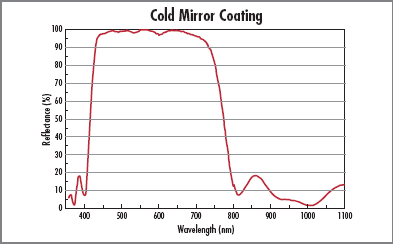
Precision Parabolic Reflectors are ideal for collimating a light source placed at the focal point of the mirror. The parabolic profile eliminates spherical aberration, allowing the light source to maintain its wavefront characteristics. These Precision Parabolic Reflectors feature very low f/#s, making them ideal for highly divergent light sources. The protected aluminum coating features broadband high reflection through the visible and IR spectra. The cold mirror coating reflects visible light while transmitting NIR, making it ideal for cold condensing applications.
Precision Parabolic Reflectors are precision polished, yielding exact aspheric profiles. These mirrors offer improved thermal stability and superior focusing efficiency versus commercially available press-molded reflectors. Typical applications include use as steppers for PCB, LCD, or PDP production, solar simulators, fiber optic illuminators, and projectors.

1-800-363-1992
or view regional numbers
QUOTE TOOL
enter stock numbers to begin
Copyright 2025, Edmund Optics Singapore Pte. Ltd, 18 Woodlands Loop #04-00, Singapore 738100
California Consumer Privacy Acts (CCPA): Do Not Sell or Share My Personal Information
California Transparency in Supply Chains Act